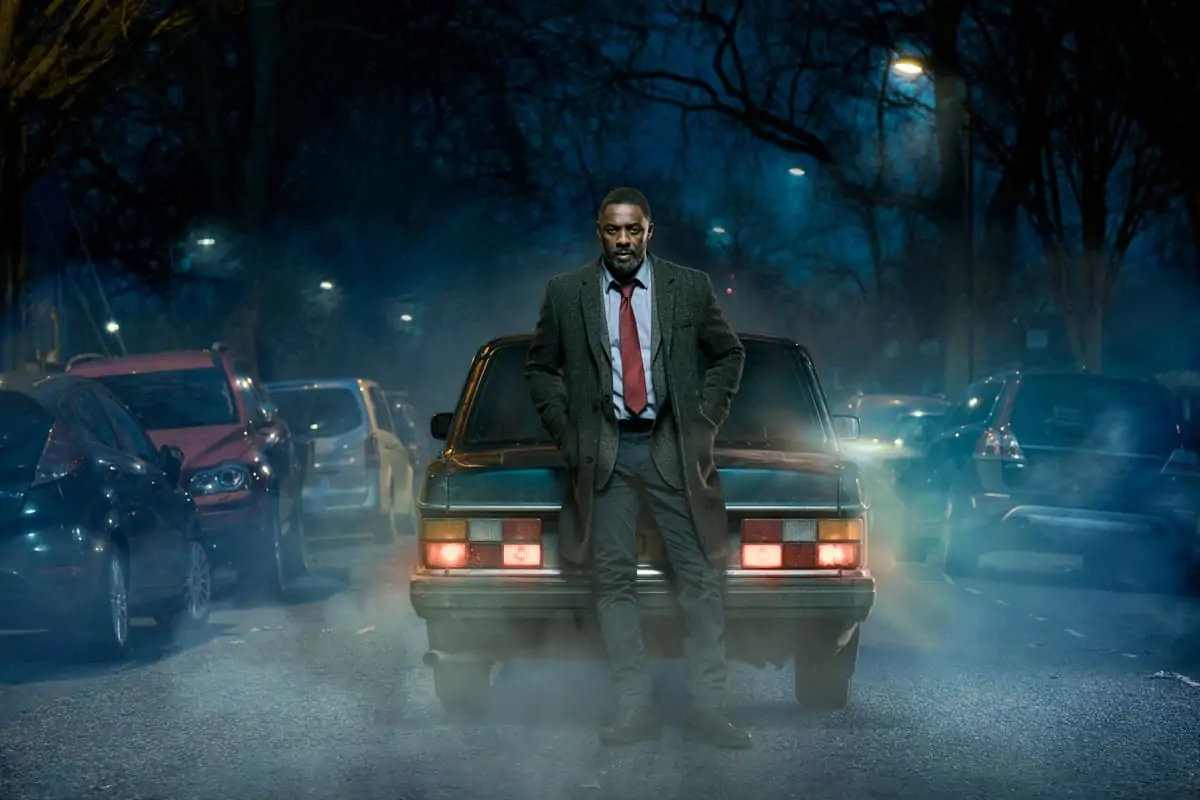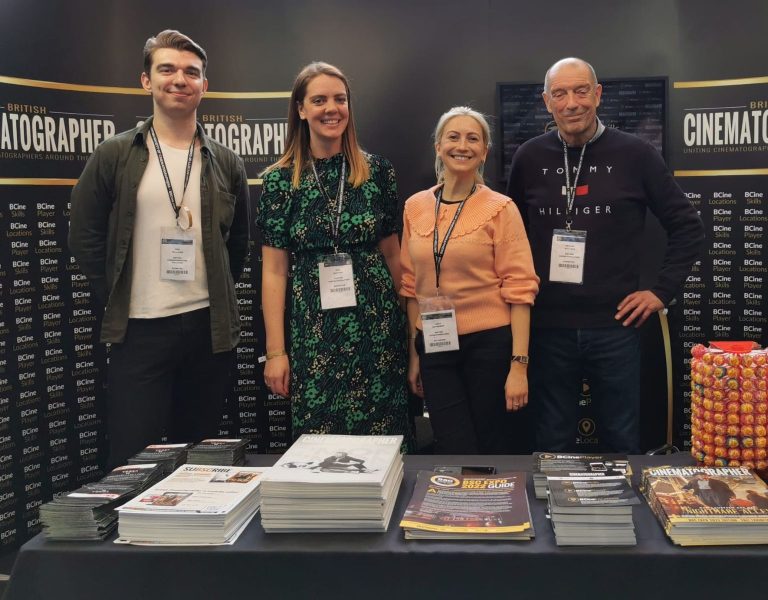Eye of the storm
New ITV drama Breathtaking is a chilling depiction of the COVID pandemic as seen through a doctor’s eyes.
Breathtaking is adapted from Dr Rachel Clarke’s memoir; a courageous insider’s account from the hospital floor at the height of the pandemic. DP John Pardue BSC and director Craig Viveiros, who have worked together for some 15 years, reflect on bringing her important story to the screen.
British Cinematographer (BC): How did you get involved with Breathtaking?
John Pardue BSC (JP): I have been working on a number of projects with director Craig Viveiros, and we were talking about ways to create a realistic way to convey the realities of a working hospital through the shooting style sometime before I was booked to do the project.
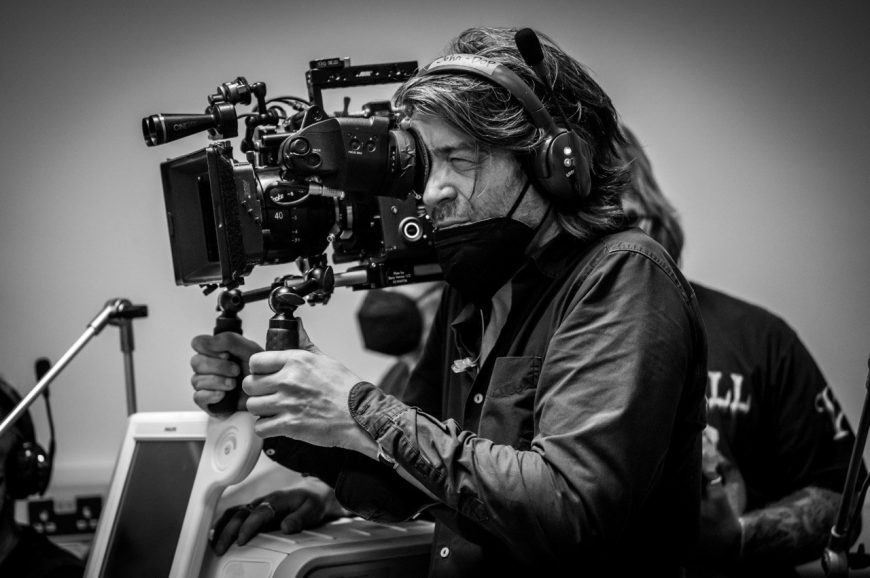
BC: When you read the script for the show, what was your initial reaction?
Craig Viveiros (CV): As soon as I read the script, I was immediately taken by the style in which it was written. It was very dynamic, and many of the scenes took place in real time.
My initial reaction was that this was unlike anything I’ve read before, especially when it comes to television. I sometimes feel that television scripts can often lean into quite familiar tropes, so it’s always a pleasure when you read something refreshing and told in a different way. What really engaged me with the script was the sheer heroism of the characters involved and I felt its was a story I thought the public needed to know.
JP: I thought the writing was especially good, with attention to detail often lacking in other more generic dramas written around a hospital scenario. The sense of realism and ‘in the moment’ jeopardy attracted me immediately to the project. There is a huge emotional punch in experiencing the crisis from the perspective of a working doctor within the hospital, a reality that most of us didn’t really see.
CV: When I read the scripts, the imagery began to fly off the page, and I could immediately see how I wanted to articulate this film visually. It felt to me like it was a war zone, and I really wanted to make sure that the audience felt the pressure that our characters were under. Because the show doesn’t distort the version of events to be more palatable, and when I say that, I mean that there is lots of medical terminology and language that will be lost on many other viewers, but I thought that was the beauty of it because it wasn’t trying to dumb down the story to make it more accessible to everyone. It was just a really true retelling of the front-line at that time, and the theme of truth is one we continued with throughout. Everything had to have happened, and everything had to be portrayed in the way that would have happened on the front line at that time.
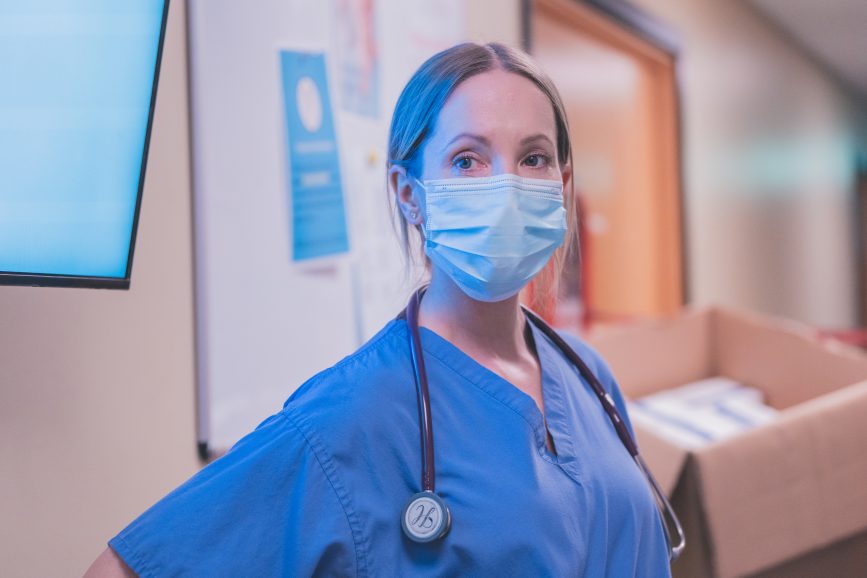
BC: Take us through your prep. What was your vision for the look and mood of the show, and what research did you do?
JP: I took director Craig’s lead in what films to watch and the overall tonal approach to the show. We wanted a documentary feel, so although it was a scripted drama, we filmed it in such a way that it felt improvised. Craig would often shoot the scenes differently on each take, and I would, for example, enter the scene differently each time. This approach kept the dramatic coverage fluid and sometimes unexpected for me operating the camera with the actors reacting to the immediacy in the scenario. If I hesitated in finding a line or was late on arriving at someone, this accidental ‘mistake’ added to the sense of realism. It puts us in the moment of the action, like shooting a battle scene or any heightened moment of dramatic jeopardy. I have a background in handheld documentaries, and I think this gave me the tools to do this as a camera operator.
CV: With regards to prepping his project, it was something that I wanted to approach differently. Knowing that one of the key themes was about authenticity and realism, I wanted to ensure that our approach felt organic. For me, that meant the approach had to be one that could pivot at any moment, almost like a live piece of television. This required finding a location that would allow my actors to move freely and the camera to roam 360 degrees without any space being off-limits. Additionally, this meant John would need to provide a 360-degree lighting setup at all times.
Instead of aiming for each individual shot, I approached it more like prepping for a theatre production. We found a location at Ulster University in Jordanstown, Belfast, and worked with Ashley Jeffers, the production designer, and John, the cinematographer, to create a landscape resembling three floors of a UK hospital. This involved extensive research, visiting emergency departments, studying the layout, design features, and ensuring the space was realistically arranged like any normal hospital, whilst allowing for the long running sequences to flow through the space uninterrupted.
During numerous visits to hospitals with Rachel Clarke, the author of the book and one of the writers/executive producers on the project, I observed how these places operated. I aimed to authentically represent how each character would feel in an under-resourced, underfunded health institute, where resources are limited and options are constrained.
BC: Did you have any creative references for the show’s look?
JP: Craig suggested a number of movies (including Victoria by Sebastian Schipper and Spielberg’s Saving Private Ryan), but the one we kept coming back to was Alejandro Gonzålez Inårritu’s Biutiful. It had a very rough celluloid palette with a sense of realism but still remained very photographic. We did some camera tests, looked at different handheld styles, and gave the test to Andrew Daniel at Goldcrest, and he created a LUT for us with some added grain to give a 16mm look with a blue bias based on the movie Biutiful. We shot the show with that LUT which DIT Alex Cheung built into our DIT set up. We ended up grading it pretty much as we shot it.
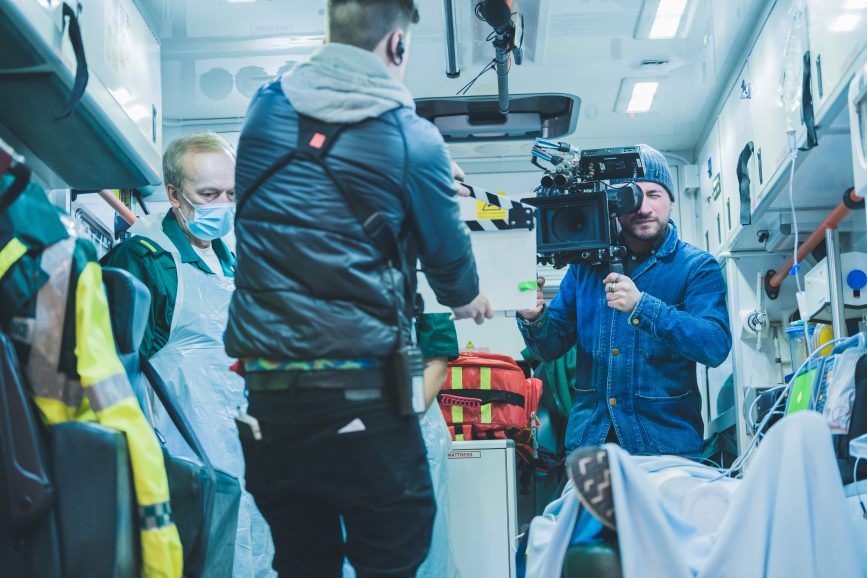
BC: What camera and lenses did you use, and why did you choose them?
JP: We used the Venice 2 and set up the camera for Super 35 to keep the depth of field, which felt a little more 16mm than the shallow depth of field from a large format sensor set-up. A too-shallow depth of field felt a bit too studied and took away from the grittiness of what we were going for. Acorn had a great set of Cooke Panchro S2s, and after comparing those with the K35s, the Panchros felt like the perfect choice optically. We had enough lenses from Acorn for our supporting operators, Andrew O’Reilly, Conor Rotherham.
CV: I wanted a contrasty feel to the image, and one that worked well with the blues, so the Venice seemed the natural choice. I wanted to shoot it with lots of long-running takes, sometimes lasting 20 minutes at a time, with multiple scenes back to back. It felt like digital was definitely the way to go. With regards to the lenses, normally I like to shoot on K35s, but for this one, particularly after some testing, John and I decided that the Panchros gave us a much better feel and look for what I wanted to achieve; something that could work for the intense, up-close, gritty and pressurised feeling we were aiming for.
What were the main cinematographic challenges of the shoot?
JP: Director Craig is a great shot-maker, and he designs some quite intricate developing shots that tell the story with energy. So, my main challenge was to accomplish long-tracking handheld shots with many built-in whip pans or alternatively subtle adjustments to capture the reaction of someone behind the subject; this was how we built up the realism in the moment. All this had to be nuanced and dynamic depending on the emotional moments within a scene. The camera danced with the actors, responding to their energy motivated by the smallest physical moments within the actors’ performance. Craig wanted the camera work to be very precise in this respect, and he has a great eye for visualising quite complicated camera moves that capture the emotional essence of the scene. We were all linked with comms back to Craig’s monitor, and he would make fine adjustments while were executing the camera moves.
On the first day, Craig compressed seven scenes comprising the day’s work into one single take or ‘oner’. We would usually achieve this with a Steadicam, but we did all this handheld, so it was quite a physical challenge but a lot of fun as well as a bit daunting; the opening of the first episode consists of elements taken from this long run through the whole of one floor of the hospital set. Craig always challenges me to make quite specific approaches with lighting and, in this case, handheld operating, and that’s why I work with him. We all like a challenge.
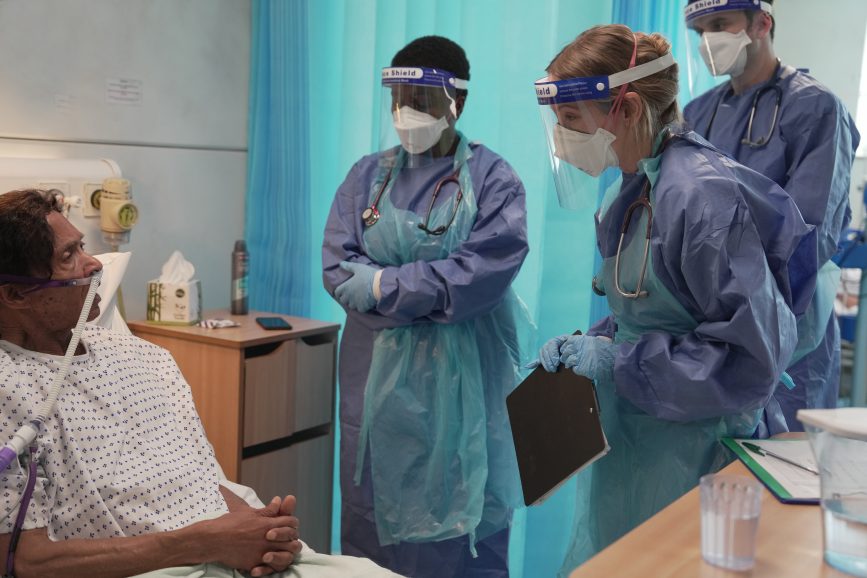
BC: What was the most challenging scene to film as a director?
CV: I would say the most challenging scene involved the death of a particular character in the story that we wanted to portray in real-time, and the process the medical staff had to undertake in these moments, and the emotional impact it had upon them. From a technical perspective, it was something that was quite simple to achieve, but from a performance, and emotional perspective, I think it was difficult for everybody to go through because we all felt so connected to the story.
BC: What was behind the decision to use real archive footage from the pandemic (such as political broadcasts)?
CV: We wanted to make sure that we were reminding the audience that these events really happened. It also anchors the public’s experience of what they were being told, to what was really happening behind closed doors on the front lines in the moment. We were very strict about making sure every account depicted in the show was in sync with the public information and government perspective at the time. It serves as a reminder of just how much the government was distorting the truth of what was really happening on the front line.
BC: What was your general approach to lighting?
JP: I had a great gaffer, Seamus Lynch, and we had some fun together putting all the lighting into production designer Ashley Jeffers’ amazingly realistic hospital set. Jeffers’ team built the hospital set on three floors on what was the old Ulster University campus. They did an amazing job in the time they had to put that together. We lit the hospital as you would light a hospital, but with a few tricks to make the lighting look good. We used over 150 tech tiles and worked these back to dimmers with egg crates to model the fall-off on the walls. But it had to remain realistic, messy and not too cosmetic; we had to fight the urge to craft things too much.
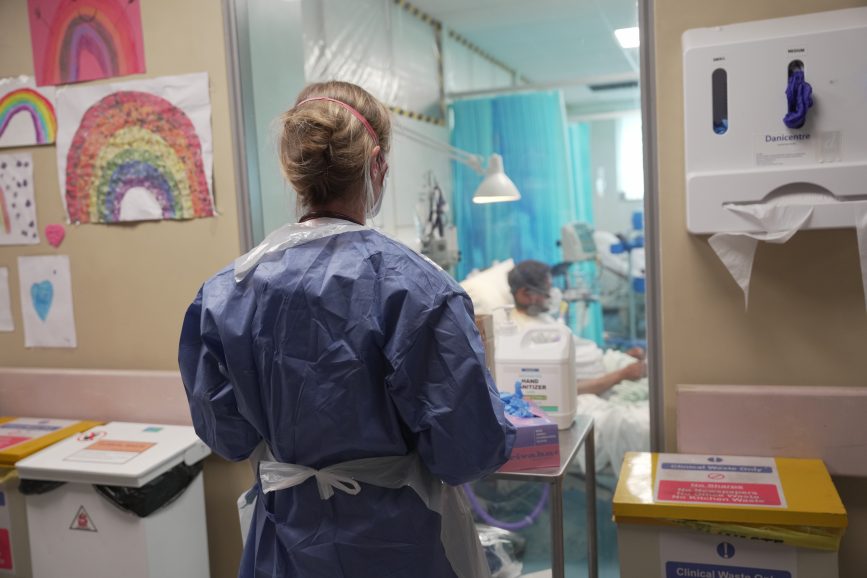
BC: What was the trickiest location or scene to light and why?
JP: We lit the hospital like it was a hospital, so that was the blueprint, except it was film lighting. Hopefully, we got the best of both worlds: realistic hospital lighting and a well-crafted storytelling palette.
BC: Can you run us through the grade?
JP: Andrew Daniel created the look with the LUT and then colourist Scott Fergusson at Yellow Moon graded the finished show and carried on what Andrew had set up.
BC: What are you most proud of from your work on Breathtaking?
JP: My handheld work in episode one, and even though many of the longer single-shot sequences were chopped up in the edit, the energy of the opening episode and the camera work set up the style for the show.
BC: What would you say was the secret to the success of your ongoing collaboration?
JP: I enjoy working with Craig. We have a good creative relationship and share the same taste in photography, which can vary from script to script and project to project. The aesthetic choices made for Breathtaking led to completely different aesthetic choices from we made for previous projects like And Then There Were None or Angela Black. Craig is a very visual director and is very involved in our visual approach for the different projects.
CV: John and I have been working together for nearly 15 years now, and we have developed a shorthand that allows us more time to be creating on set. He is a great cinematographer and is able to adapt to different styles. Whatever random, crazy curveballs I throw him, he’s always able to find a way through and deliver beyond my expectations.
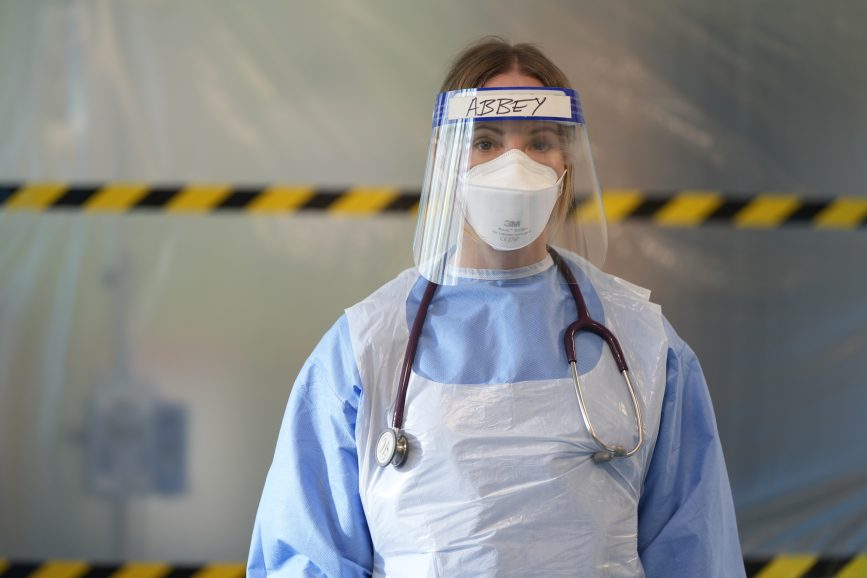
BC: Do you think Craig’s background in camera operating helps you establish your shorthand on each project?
CV: I don’t think I ever saw myself as an operator. Yes I held that position on many projects but I only really worked with one cinematographer, James Friend (ASC BSC). I was always a writer/director who happened to be a good operator, and operating helps to hone an understanding of the cinematic grammar of whatever you’re shooting, the technical knowledge of how to set up the shot, and also you’re working up close with actors and understand how to communicate with them in a way they understand. As well as helping me form better relationships with cinematographers, operating continually improved my ability as a director. We’re always learning and I love being on set, so I’m always helping out in whatever way I can if I believe in the project or a person and their creative energy.
My relationship with cinematographers is always one of a very unified position. I’m very hands-on with the visuals and the cinematography, and I see us all as being part of the same team. Whichever direction a project goes in, we’re all in it together.
JP: As I said, Craig is a good designer of shots and shot sequences. I think his previous experience as an operator must have been part of this. He built up aspects of his directing abilities from his past operating journey. The choreography of a scene and the choice of shots are areas where the operating job and the directing job cross over. Operators often make directors look very good, and of course, it works the other way too. In Craig’s case, I think as an operator, I am guessing that he helped a lot of directors out with their shot-making, leading the way to where he is now with a huge technical confidence in filmmaking combined with his very good understanding of storytelling.
The first episode of Breathtaking will air on ITV on 19 February at 9pm and will be streaming on ITVX.

